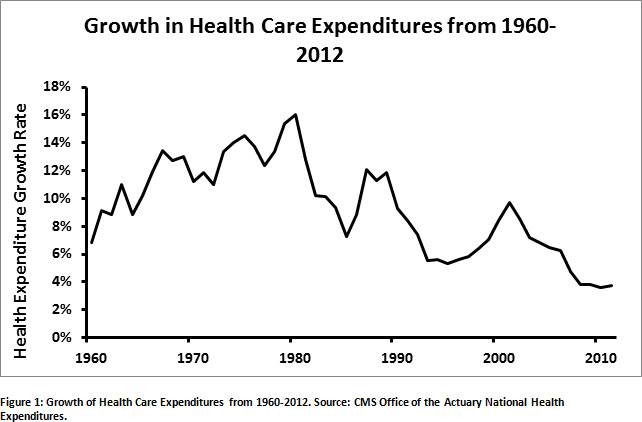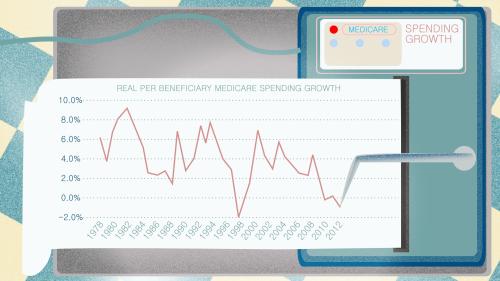For years, rapidly escalating health care costs have consumed a growing share of the U.S. economy ,threatening timely access to health care services, diminishing our ability to invest in other sectors such as education, and challenging our global competitiveness. Many state and national efforts have focused on creating a higher-value health care system that provides better, more cost-effective care to patients. Recently, there have been promising signs that these programs and policies have helped to bend the cost curve in health care. And for a fourth consecutive year, this trend of slower health care cost growth continued, according to a recent report from the Office of the Actuary at the Centers for Medicare and Medicaid Services (CMS).
The report showed that the growth in health care spending dipped to 3.7 percent in 2012, totaling $2.8 trillion. Excitingly, and for the first time in years, the share of the economy devoted to health care also dropped from 17.3 percent to 17.2 percent. The steady downward trend began in 2003 (Figure 1), after the last peak 9.7 percent in 2002, the cause of which is likely multifactorial. Possible explanations include lower overall spending during the recession; structural improvements to the health care system codified in the Patient Protection and Affordable Care Act (ACA) in 2010; and an increase in out-of-pocket spending due to less generous employer-provided insurance plans.

For this particular year, CMS attributed a plurality of the slowdown to specific provisions of the ACA that offered Medicaid prescription drug rebates and Medicare drug coverage gap discounts; covered dependents through the age of 26; established a minimum amount of money that insurers must spend on improvements in care quality and medical claims; and reduced Medicare payments for many providers. In addition, prices slowed for increasingly-used nursing home services. Accordingly, the report also noted slowing in spending growth for CMS’ two primary federal programs, Medicare and Medicaid.
While this evidence of a continuing depression in health care spending is promising, ongoing efforts to further reform the health care system are needed to drive this trend into the future. Reports from Brookings, the Bipartisan Policy Center, and the National Commission on Physician Payment Reform have all highlighted the perils of rising health care costs, and offer innovative solutions to bend the cost curve and improve overall care quality. Such work must continue to make lasting progress in health care payment and delivery.



Commentary
Interpreting Recent Health Care Cost Growth Data
January 8, 2014